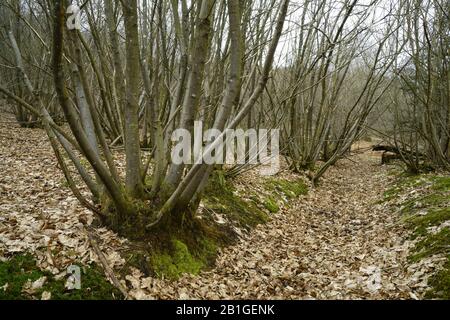
In subsequent years, cuts should be made just above the previous pollard level to retain those areas of growth.Ĭut your tree so it is out of reach of any potential browsing animals:įormative pruning What is formative pruning?įormative pruning is the management of young trees in order to manipulate their shape as they grow. Make a clean cut, sloped to avoid rainwater causing rot and without separating bark from the wood. Cut all limbs close to the stem's base to create the pollard head. Use any sharp tool suitable for the size of material being removed. Species like ash or hornbeam may benefit from retaining some branch cover. Whether you remove some or all branches may depend on the species or required outcome for your tree. Once the tree is the desired height, you can remove branches above the main trunk. Cut your trees to create tree fodder in summer on a short rotation. Re-pollarding can be done in winter for firewood and building materials. Larger trees can also be topped and established as pollards – success depends on the age, species and level of shading. It's best to do this when the tree is young, usually 5-15 years old. Do this once the tree has grown above the height at which you want to maintain the pollard. Make the first cut on a maiden tree in winter. Willow, ash, beech, hornbeam, lime and holly are traditionally pollarded for tree fodder, but most native trees can be pollarded. Opening up the canopy in this way increases woodland light levels and benefits ground flora while making it more productive for grazing.

Pollarded branches were traditionally used for animal fodder. The cut branches can be used for firewood, building materials and other coppice products. Pollarding is the regular cutting of upper branches to encourage regrowth of dense foliage at the top of the tree. These trees will become majestic features of the wood. Leave a standard tree as a marker at each corner of the plot. Some well-formed trees can be left in each coupe to establish a ‘coppice with standards’ system.

Divide the woodland into equal blocks and coppice within each coupe on a one year cycle. The coupe size should relate to the rotation length. This allows light in to ensure coppice stools regrow. You can rotate fencing to different coupes throughout your coppicing cycle.Ĭoppice woodland in blocks known as coupes. put a 6 foot high fence in place for a minimum of 2 years, until new shoots are out of reach of browsing animals.use lop and top to build “dead hedges” around groups of stools.use branches left on the ground after cutting (lop and top) to pile on the coppice stool be aware this may suppress regrowth or reduce the straightness of new stems.New shoots are attractive to deer, rabbits, hare and other livestock. To ensure a productive coppice, protect stools from browsing mammals.The cut should be sloped to throw off water and avoid the stool rotting. Make a clean cut without separating bark from the wood. Use any sharp tool suitable for the size of material you are felling.Cut single-stemmed trees as close to the ground as possible and already established stools as close to the previous cut as possible.Oak/hornbeam: 15-25 year cycle for firewood and building materials.Sweet chestnut: 15 year cycle for fencing materials.Frequency depends on species and products you want to create, for example: The best time to coppice is late September to early March when trees are dormant. This could be after 1-2 seasons but is usually 5-6 years (more in Scotland). Start coppicing once trees are growing vigorously. Most native trees, but commonly oak, sweet chestnut, willow, lime, hornbeam, field maple, rowan, alder and hazel. The new stems grow back faster to provide a sustainable timber supply rather than harvesting more mature, thicker branches. They regrow from dormant buds at the base of the stump (known as the stool) to create dense stands of multi-stemmed trees.

Trees are cut close to the ground on a regular cycle. Coppicing is an ancient system of woodland management.


 0 kommentar(er)
0 kommentar(er)
